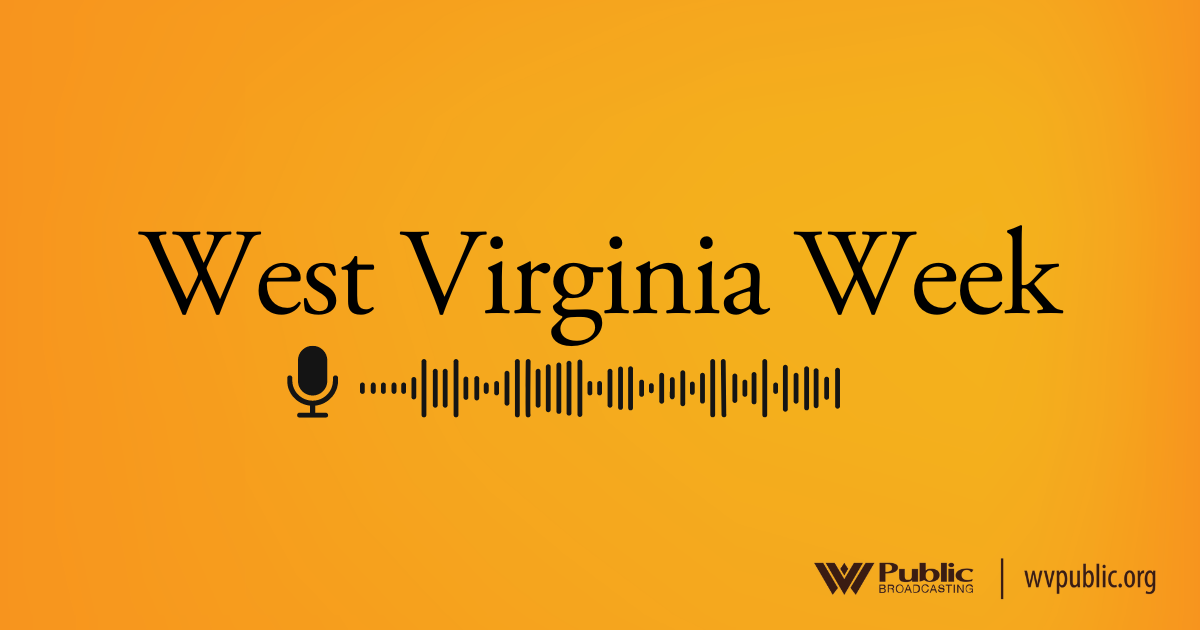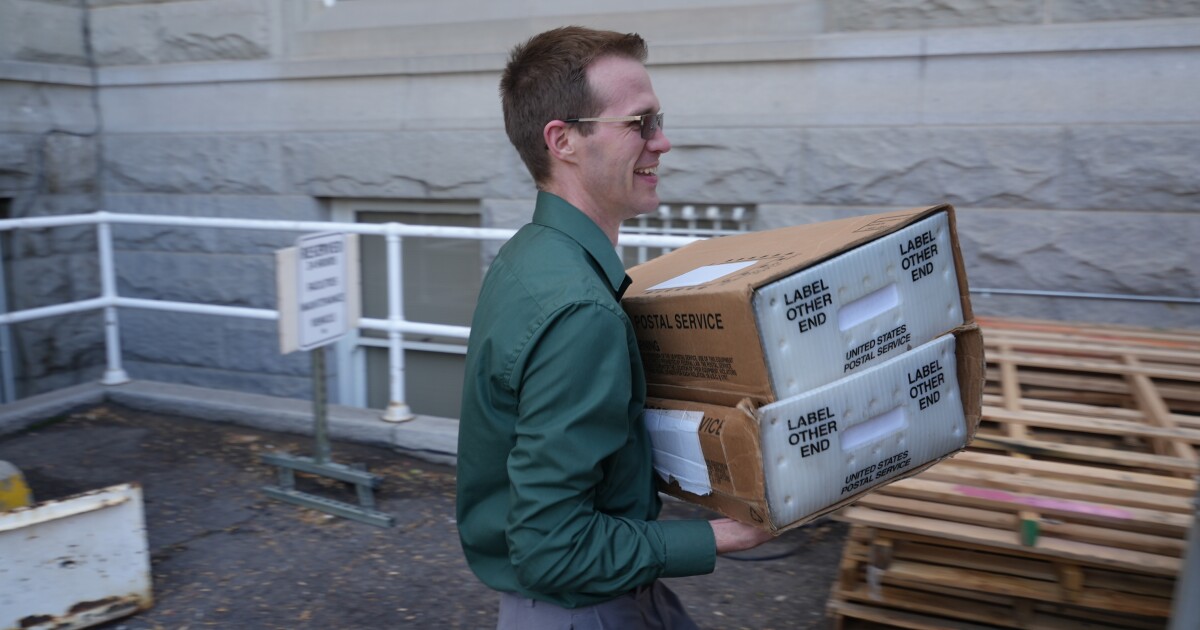Utah
Deep red Utah wants to keep voting by mail • Stateline

When it comes to voting by mail, Utah is not your typical deep red state.
In 2020, when many states scrambled to implement mail-in voting so voters had a safe way to cast a ballot during the pandemic, Utah already had a system.
Republican conspiracy theories questioning the integrity of voting by mail in the tumultuous aftermath of the 2020 election never rang true for most Utahns. They’d been testing the system for years and found it trustworthy and convenient.
In Utah, that appreciation has stuck in the four years since, despite several legislative attempts by Republicans to curb residents’ access to mail-in ballots.
Again this year, members of the Republican supermajority in Salt Lake City joined Democrats in rejecting attempts to curb the state’s universal vote-by-mail system. The failed bills would have added a new deadline for turning in ballots and required voters to request mail-in ballots rather than having them sent automatically.
There’s a different story playing out nationally. Former President Donald Trump, the presumptive 2024 Republican nominee, has — without evidence — lambasted the voting process as being rife with fraud and has blamed it for rigging elections for his opponents. Republican lawmakers around the country have listened to him.
Republican-led states have restricted access to voting by mail through tighter deadlines, limiting who can request a mail-in ballot and eliminating drop boxes. Utah, though, continues to back its approach to ballot access, as bipartisan opponents turned aside efforts to restrict mail-in voting.
As ranked choice voting gains momentum, parties in power push back
The mistrust of an unfamiliar voting method that dominated other red states’ politics never landed fully in Utah, said TJ Ellerbeck, executive director of the Rural Utah Project, a group that advocates for Native American and rural voters.
“Most average voters in Utah don’t think that there’s anything wrong that needs to be fixed,” Ellerbeck said. “The ideas that are put forth by a handful of legislators in states across the country just really don’t reflect what people actually think about our voting system.”
Some of the Republican lawmakers behind proposed mail-voting restrictions in Utah concede that point, even as they try to navigate the prevailing mood in their party. In order to restore confidence in elections, the argument goes, voting rules must be tightened.
Republican state Rep. Norm Thurston, for example, proposed a measure that would have required that mailed ballots get to county clerks on Election Day, instead of merely being postmarked by Election Day. That would have cut into potential voters’ time to make their decisions and added uncertainty in rural areas with slower mail service.
“In Utah, I don’t know that we have a particular problem,” Thurston said in an interview.
“But one of my concerns is making sure that our voters have confidence that our voting process is not flawed or vulnerable,” he said. “We want people to know our process is solid and that people can have trust in how things are going to turn out.”
In Utah, though, voter confidence is high.
We have a very vibrant voting system in Utah. We have been able to prove that we are a model for the nation on mailed ballots.
– Katharine Biele, president of the League of Women Voters of Utah
According to a January poll commissioned by the Sutherland Institute, a Utah-based conservative think tank, 76% of likely 2024 voters in the state think the vote-by-mail process produces fair outcomes.
“There’s a political momentum on the Republican side to put more restrictions on it,” said Derek Monson, chief growth officer at the Sutherland Institute. “But it’s up against this experiential reality that people like it, they’re familiar with it, they’re confident in it.”
In the large, rural state, whose southeastern end includes a slice of the Navajo Nation, voting by mail allows remote voters who may be hours from a polling place to conveniently cast their ballots. Even before the pandemic, Utah was one of four states (Colorado, Hawaii and Oregon were the others) where nearly all voters used mail-in ballots, keeping only a handful of vote centers open for people to drop them off in person. Today, Utah is the sole Republican state among the eight states (plus the District of Columbia) that send mail-in ballots to every voter.
“We have a very vibrant voting system in Utah,” said Katharine Biele, president of the League of Women Voters of Utah. “We have been able to prove that we are a model for the nation on mailed ballots.”
So far, Utah has resisted attempts at making major changes to its vote-by-mail system. But voting rights advocates are not breathing easy.
“Utah is not immune,” said Ellerbeck. “It’s a fight we’re winning, but we haven’t won.”
Why Republican-led states keep leaving a group that verifies voter rolls
There are some members of the legislature who, like Thurston, want to add limits in the name of improving accuracy and integrity of elections. Utah wouldn’t be alone among states that have tighter rules around voting by mail, even in states led by Democrats.
He got the idea for his legislation, he said, during a National Conference of State Legislatures summit. There, he heard that blue Colorado, which also has a vote-by-mail system, requires that ballots be received by county clerks by 7 p.m. on Election Day.
“We were trying to figure out if there is a way that we can accelerate the finalization of the election with the goal of giving more people confidence that our election processes is safe,” said Thurston, who added that he returns his ballot early through a drop box, not trusting the mail.
Hundreds of supporters of voting by mail showed up at the committee hearing for his bill in January; they argued that a change in long-standing procedure could confuse and potentially disenfranchise voters who have slow mail in rural areas.
After the bill was held in committee by a unanimous vote, including by Thurston, committee leaders didn’t take up another bill that would have limited voting by mail.
Thurston said he understood the concerns local election officials and voters voiced about changing deadlines, acknowledging that it might require a “massive” voter awareness campaign, which could be expensive and difficult.
Similar objections were raised in 2022, when one Republican lawmaker attempted to scrap the state’s vote-by-mail system and return to in-person voting. That bill also failed to advance out of committee, with several Republicans joining Democrats to defeat it.
Voting by mail remains at risk in many other states.
Last month, the Republican-led Arizona House passed a bill that would limit mail-in voting to people with disabilities, military members and older people, with limited exceptions for people temporarily out of the state. The bill is awaiting a committee hearing in the state Senate.
Meanwhile, at least two dozen other states are exploring further limits this year, though few if any have been signed into law. Last year, 14 states enacted 17 restrictive voting laws that included banning ballot drop boxes, requiring more information to receive mail-in ballots and shortening deadlines for turning in absentee ballots, according to the Brennan Center for Justice, a New York-based voting rights advocacy organization.
Feds deliver stark warnings to state election officials ahead of November
Even in Utah, new hurdles to voting have emerged in recent years.
In 2022, Republican Gov. Spencer Cox signed into law a measure that requires 24-hour video surveillance of ballot drop boxes. Voting rights advocates opposed the bill, arguing it would limit some locations for drop boxes in heavily rural areas, especially on the Navajo Nation, where there is sporadic electricity, said Ellerbeck, of the Rural Utah Project.
And in Utah County, the second most populous in the state, County Clerk Aaron Davidson, a Republican, decided the county would no longer pay postage for mail-in ballots.
The move aims to encourage voters to use ballot drop boxes, instead of relying on the mail. It will also save the county $110,000 a year, he said. Nineteen Utah counties don’t provide postage for mail-in ballots, Davidson pointed out, while 10 others do, including Salt Lake County, home to more than a third of Utahns.
Davidson made the announcement while speaking in favor of Thurston’s legislation during the committee hearing in January. He told Stateline, though, that he had softened his position on mail-in ballot deadlines after hearing testimony from clerks in smaller, more rural counties who worried delays in the mail could make it harder to make an Election Day deadline.
“Society has just got more complex, and people need that ability to vote by mail,” Davidson said. “But I do believe it needs some more restrictions.”

Utah
Utah’s reservoirs are at about 90% capacity, except Lake Powell

Kyle Dunphey
(Utah News Dispatch) Utah’s reservoirs are still at what the state calls “impressive” levels, with most hovering around 90% capacity — by comparison, statewide levels were a little over half full this time last year.
But Lake Powell, the country’s second-largest reservoir, is an outlier. According to the U.S. Bureau of Reclamation, it’s currently at about 35% capacity.
During a Legislative Water Development Commission meeting in Salt Lake City last week, director of the Utah Division of Water Resources Candice Hasenyager gave lawmakers an update on the state’s water outlook.
“Our reservoirs are about full, we’re at about 90% of our statewide average,” she said. But, she noted Lake Powell as a glaring exception.
“That’s still definitely a concern that we have,” Hasenyager told lawmakers.
In a statement, the U.S. Bureau of Reclamation said Lake Powell should not be compared to other reservoirs in the state because of its size and the various policies that dictate its levels.
“Lake Powell is substantially larger, with a live capacity of nearly 25 million acre-feet,” a spokesperson for the bureau said. “This capacity is more than eight times the capacity of Strawberry Reservoir.”
Those levels are often out of the state’s control, and are in part due to the complexity of the Colorado River Basin and the system that allocates water to seven states and Mexico, called the Colorado River Compact.
Through the compact, the bureau “has modified the operating guidelines for Glen Canyon and Hoover dams through 2026, to protect these facilities and lake levels if poor hydrologic conditions persist,” the spokesperson said.
Despite Lake Powell appearing to be far behind Utah’s other reservoirs in terms of capacity, the bureau noted that the situation is much better than last year — currently, it sits at about 24 feet higher than last May, and officials say levels will continue to rise, expected to hit about 41% capacity in June. After that, the bureau said it will decline until spring runoff in 2025.
Still, the state’s lack of control over Lake Powell drew some disapproval from outgoing Rep. Phil Lyman, R-Blanding, who is currently running for governor. Lyman, a fierce critic of the federal government’s presence in Utah, lamented the levels being “set by the Secretary of the Interior.”
“Are we working with the Secretary of the Interior, are we working with the federal government to keep that at a viable level?” Lyman asked. “What we’ve really seen is intentional, keeping that below a viable recreation level and I hope the legislature can influence that decision in the future.”
In response to Lyman’s comments, the Bureau of Reclamation pointed to the bevy of compacts, federal laws, court decisions, contracts and regulatory guidelines that control flows in the Colorado River and levels at Lake Powell.
“Reclamation has a long-standing history of working with all stakeholders in the basin on cooperative agreements that help define operational actions at critical times and to protect the levels at Lake Powell and sustain and protect the Colorado River Basin,” the bureau said.
When asked about Lyman’s comments, Utah Gov. Spencer Cox responded, “I have no idea what he’s talking about.”
“People can make up stuff all they want. Nobody is deliberately keeping the water levels low at Lake Powell,” the governor said during his monthly PBS news conference on Thursday, calling his gubernatorial opponent’s claim “bonkers.”
Cox pointed to ongoing negotiations among water managers from Colorado River basin states who are working on a new management plan ahead of 2026, when the current guidelines expire.
Cox told reporters the state has been releasing its own water from Flaming Gorge Reservoir to ensure the Glen Canyon Dam at Lake Powell can continue generating power. Some of that water was released to Lake Mead, he said — now, the state is hoping to get that water back.
“There are big discussions about where that water goes and where our portions of the water go. We’ve had huge releases from upstream reservoirs that have gone into Lake Powell,” Cox said. “That’s mostly our water. …These are very, very complex negotiations that are going back and forth, and part of the negotiations and what we’re doing right now is making sure we can restore the water that we released.”
‘Exactly what we need’
On Thursday, the Division of Water Resources said over half of the snow from this winter has melted, with recent weather patterns resulting in “optimal spring runoff.”
“A slow warmup is exactly what we need to have a safe and effective spring runoff,” Hasenyager said in a statement. “We still have a good amount of snow in the mountains, so we are hoping for a gradual snow melt.”
Utah
USA's BIGGEST States… Utah NOT In The Top 10?

Many people believe Texas is the biggest state, and Hawaii is the smallest. Those people are WRONG! States are measured by their square miles. Have you ever wondered which states are the biggest? Utah ALMOST made the TOP 10 for BIGGEST STATES in the Country!
USA’s TOP 15 BIGGEST STATES (per square miles):
- Alaska: (586,000 square miles)
- Texas: (261,232 square miles)
- California: (155,959 square miles)
- Montana: (145,552 square miles)
- New Mexico: (121,298 square miles)
- Arizona: (113,594 square miles)
- Nevada: (109,781 square miles)
- Colorado: (103,641 square miles)
- Wyoming: (97,093 square miles)
- Oregon: (95,988 square miles)
- Idaho: (82,643 square miles)
- Utah: (82,169 square miles)
- Kansas: (81,758 square miles)
- Minnesota: (79,626 square miles)
- Nebraska: (76,824 square miles)
USA’s TOP 15 SMALLEST STATES (per square miles):
35. Ohio: (40,860 square miles)
36. Virginia: (39,490 square miles)
37. Kentucky: (39,486 square miles)
38. Indiana: (35,826 square miles)
39. Maine: (30,842 square miles)
40. South Carolina: (30,060 square miles)
41. West Virginia (24,038 square miles)
42. Maryland: (9,707 square miles)
43. Vermont: (9,216 square miles)
44. New Hampshire: (8,952 square miles)
45. Massachusetts: (7,800 square miles)
46. New Jersey: (7,354 square miles)
47. Hawaii: (6,422 square miles)
48. Connecticut: (4,842 square miles)
49. Delaware: (1,948 square miles)
50. Rhode Island: (1,033 square miles)
THE ENTIRE LIST OF THE USA’s STATES RANKED BIGGEST TO SMALLEST (per square miles):
- Alaska: 586,000 square miles
- Texas: 261,232 square miles
- California: 155,959 square miles
- Montana: 145,552 square miles
- New Mexico: 121,298 square miles
- Arizona: 113,594 square miles
- Nevada: 109,781 square miles
- Colorado: 103,641 square miles
- Wyoming: 97,093 square miles
- Oregon: 95,988 square miles
- Idaho: 82,643 square miles
- Utah: 82,169 square miles
- Kansas: 81,758 square miles
- Minnesota: 79,626 square miles
- Nebraska: 76,824 square miles
- South Dakota: 75,811 square miles
- North Dakota: 69,000 square miles
- Missouri: 68,741 square miles
- Oklahoma: 68,594 square miles
- Washington: 66,455 square miles
- Georgia: 57,513 square miles
- Michigan: 56,538 square miles
- Iowa: 55,857 square miles
- Illinois: 55,518 square miles
- Wisconsin: 54,157 square miles
- Florida: 53,624 square miles
- Arkansas: 52,035 square miles
- Alabama: 50,645 square miles
- North Carolina: 48,617 square miles
- New York: 47,126 square miles
- Mississippi: 46,923 square miles
- Pennsylvania: 44,742 square miles
- Louisiana: 43,203 square miles
- Tennessee: 41,234 square miles
- Ohio: 40,860 square miles
- Virginia: 39,490 square miles
- Kentucky: 39,486 square miles
- Indiana: 35,826 square miles
- Maine: 30,842 square miles
- South Carolina: 30,060 square miles
- West Virginia 24,038 square miles
- Maryland: 9,707 square miles
- Vermont: 9,216 square miles
- New Hampshire: 8,952 square miles
- Massachusetts: 7,800 square miles
- New Jersey: 7,354 square miles
- Hawaii: 6,422 square miles
- Connecticut: 4,842 square miles
- Delaware: 1,948 square miles
- Rhode Island: 1,033 square miles
One thing that caught my eye was how TINY Rhode Island is… at 1,033 square miles, it’s less than half the size of Washington County! WOW!
Utah
Jazz Insider Dumps Cold Water on Bronny James Draft Buzz

Buzz continues to surround the Utah Jazz as we stand just over a month from the kick off the 2024 NBA Draft.
And while the Jazz hold two first-rounders to start the draft at pick 10 and 28, a large chunk of the rumors revolving around Utah have been based on their use of their 32nd pick in the second. USC guard and son of LeBron James, Bronny James, was the most recent guard mentioned to have potential interest from the Jazz, effectively generating some hype surrounding the 19-year-old in coming to SLC.
The report inevitably made for some fun discussions of what possibilities next season could hold for the Jazz, but newly uncovered developments have seemingly brought the Bronny to Utah train to a halt.
Despite some chatter linking the Jazz with James heating up at the combine earlier this week, Sarah Todd of Deseret News reports that those rumors might be a whole lot of nothing.
“I looked into this as much as possible and although James impressed during the combine, it doesn’t seem like the Jazz are interested,” Todd said. “A number of team sources seemed confused about where the Yahoo Sports report had come from, with one source telling the Deseret News that the name Bronny James has never come up in any draft conversations among Jazz decision makers.”
Instead of looking towards the direction of Bronny towards the top of the first, the Jazz will likely turn their direction elsewhere. The USC product came out with a nice combine performance to boost his stock deeper into the second round, but Utah might not be his eventual landing spot.
In the event the Jazz don’t end up finding a prospect that they love at the top of the second, keep an eye out for a trade involving the pick. Danny Ainge remained confident that the team would remain aggressive this summer in a pursuit to improve this squad for next season, and the right move surrounding some picks down the board can effectively bring that.
All draft answers will be delivered for the Jazz when the big night officially arrives on June 26th.
Follow Inside The Jazz on Facebook and X.
Subscribe to YouTube for breaking Jazz news videos and live streams!
-

 News1 week ago
News1 week agoSkeletal remains found almost 40 years ago identified as woman who disappeared in 1968
-

 World1 week ago
World1 week agoIndia Lok Sabha election 2024 Phase 4: Who votes and what’s at stake?
-

 Politics1 week ago
Politics1 week agoTales from the trail: The blue states Trump eyes to turn red in November
-

 Movie Reviews1 week ago
Movie Reviews1 week ago“Kingdom of the Planet of the Apes”: Disney's New Kingdom is Far From Magical (Movie Review)
-

 World1 week ago
World1 week agoBorrell: Spain, Ireland and others could recognise Palestine on 21 May
-

 World1 week ago
World1 week agoUkraine’s military chief admits ‘difficult situation’ in Kharkiv region
-

 World1 week ago
World1 week agoCatalans vote in crucial regional election for the separatist movement
-

 Politics1 week ago
Politics1 week agoNorth Dakota gov, former presidential candidate Doug Burgum front and center at Trump New Jersey rally



















